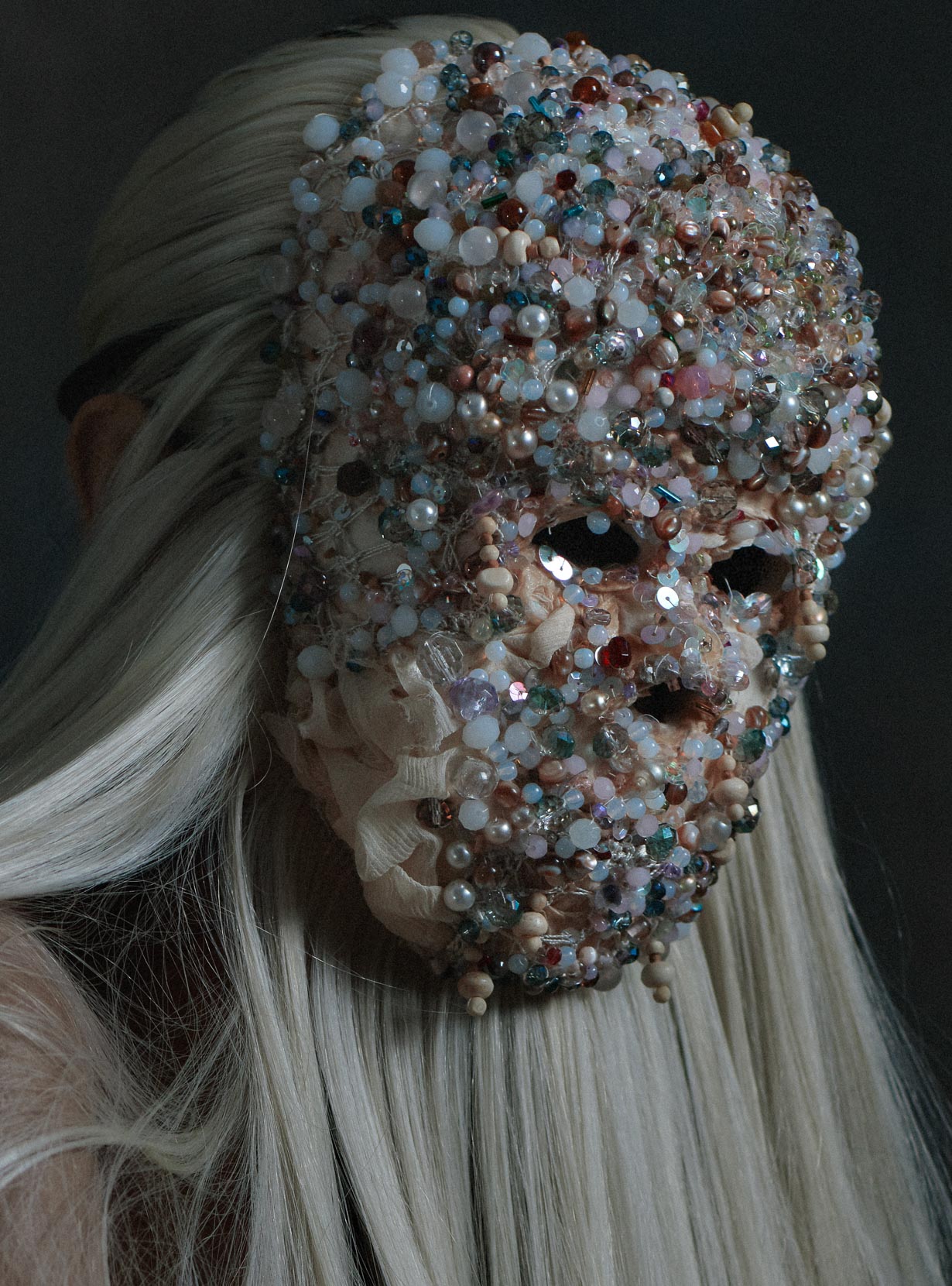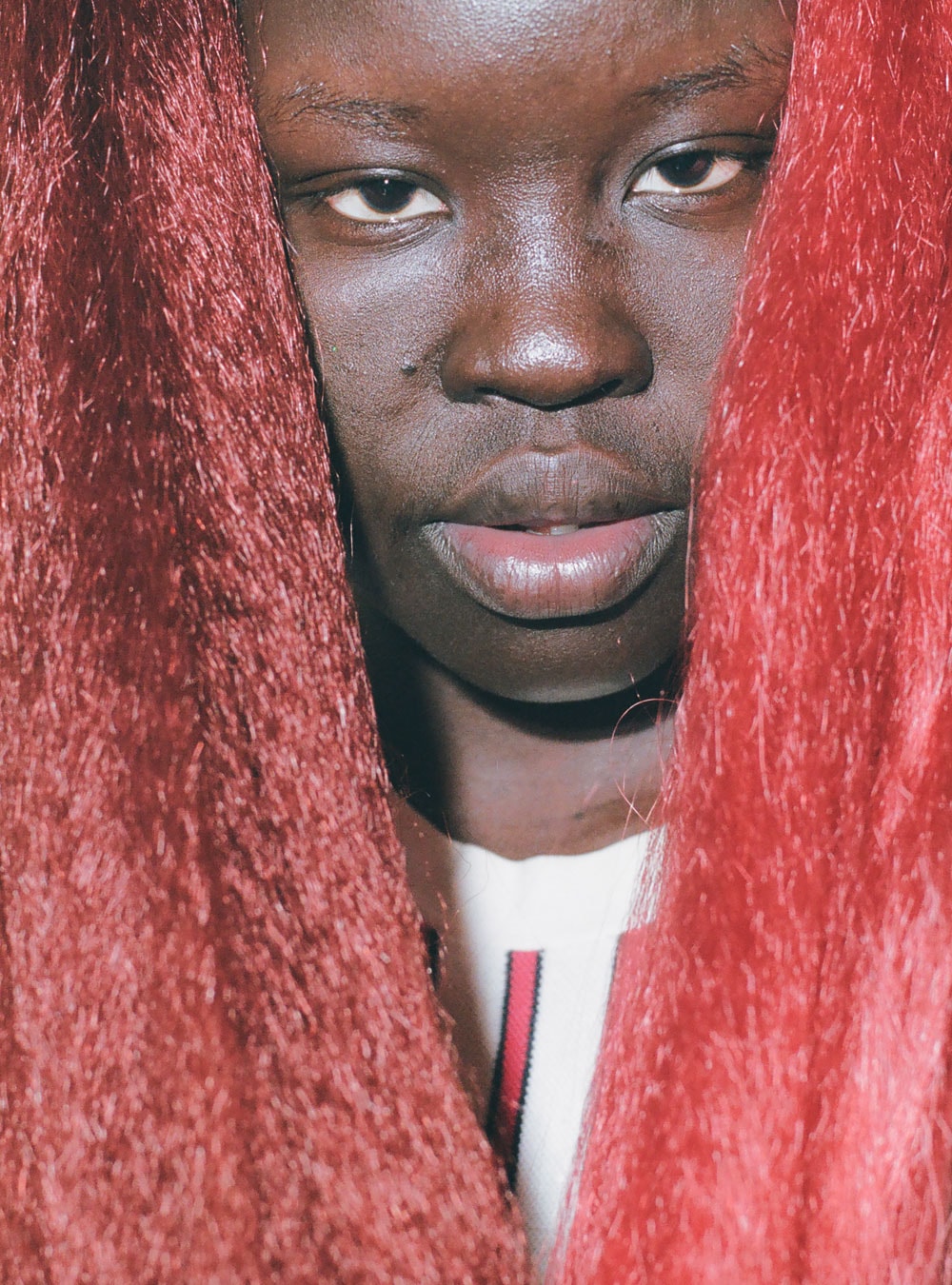- Muriel Nisse
- Muriel Nisse
- Muriel Nisse
PEOPLE: Inside the studio of artist Muriel Nisse, who uses hair to create experimental masks and headpieces
Using materials such as human hair, lace and feathers, Muriel Nisse crafts delicate masks and headpieces from her Bordeaux studio. Each piece is created by hand, which means that some of her most intricate creations can take up to 150 hours to complete.
Nisse attended the School of Decorative Arts in her home city of Strasbourg, before becoming a make-up artist and wig maker for the Paris Opera. She has also assisted Charlie Le Mindu, the subversive hair artist and designer known for his bold and provocative use of hair. Like Le Mindu, Nisse pushes the potential of hair as a component in her work, often referencing the primal, animalistic element of the material. Weaving together historical and contemporary influences, Nisse often incorporates baroque, religious and tribal motifs into her pieces. She explains that, by covering the face, the most recognisably human element, she is free to create something otherworldly and theatrical. “When you transform your face, putting a filter over reality, you gain a huge amount of freedom” she says. “The mask is not just an ornament which accentuates the face, it’s a character with a strength and an evocative power… and when you wear it, you disappear completely.”
Never consisting of just one technique or material, Nisse’s pieces are often embellished with many different pieces, such as gemstones, crystals and feathers. Despite the delicate nature of these individual components, in their final form the masks can veer from ethereal and fragile, to brutal or even ghoulish. “All that matters is that the mix (of materials) always creates an emotion,” she says. We visited Nisse at her home and studio in Bordeaux.
Why are you attracted to using hair within your work? Hair is a fascinating material. It’s an extension of the human body, it’s alive but at the same time it’s something that lasts in time. It really draws me in, as time goes on I seem to want to integrate it into my work more and more.
You’ve worked as a wigmaker and make-up artist. What first drew you to mask-making? The mask is a subject that I’m quite obsessed with. Mankind has always instinctively created them, putting together different elements and applying them to their faces. Every time I have an emotion I feel like translating it into a mask. I was first drawn to masks when I was at school. I modelled for a bust and they asked me if I wanted to keep it. I vividly remember a specific moment in 2009, I was still in school, and this bust was in front of me. I just began putting materials onto it, and made several shapes which I tested on my face. I still always work on this bust so, in a way, I am always working on myself, creating masks that fit my face.
Do you remember the first masks you made? Yes, the first pieces I made were experiments, using textiles. I even made some masks out of rubbish bags, and from there I started to create more elaborate and ornamental pieces. I destroyed the first pieces I made, because sometimes, you create things just as a test. I didn’t see them as objects that were meant to last.
How would you describe your working process? The way I work is really spontaneous and instinctive, I improvise based on the materials I have available, what I’m feeling in the moment or a song I’m listening to. I might have a material or a colour that I like, or there’s a technique that I’ll use to begin to work the material, which I’ll then mix with others. Honestly, I never know at the beginning what the object will become, I only know it at the end, when I’m wearing it and I’m satisfied that I’ve managed to translate a specific intensity or emotion. The entire process is an outlet for me.
Video + Interview: Antonio Celotto
Interview, Words + Studio Photography: Alex Mascolo
Images: Charlotte Mano + Muriel Nisse
Special Thanks: Muriel Nisse
- ANTHROPOLOGY OF HAIR
- ANTHROPOLOGY OF HAIR
- ANTHROPOLOGY OF HAIR
- ANTHROPOLOGY OF HAIR
- ANTHROPOLOGY OF HAIR
















